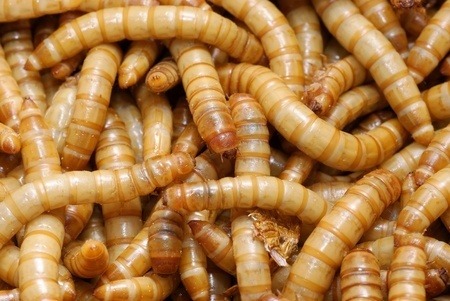
Plastic eaten by mealworms and saving the planet might have seemed liked some lurid science fiction pot boiler years ago but there is reality in this actually happening. Yes insects can plastic !
A research article in the journal Environmental Science & Technology has shown us that the small mealworms that we could eat also like to digest plastic waste. It is even the sort of plastic that might be covered in chemicals and then be a safe source of protein-rich food for other animals. That almost sounds utopian or perhaps dystopian depending on your world view about eating foods especially insects but there it is.
Our world is trying to reduce the use of single-use plastic but finding the ways and means of doing so is proving no easy task. Perhaps one way at least to deal with the throwaway element is to have it eaten by something else rather than just land-fill it or burn it. It appears that mealworms, which are a potential food source might just be that answer to our pollution issues when it comes to dealing with plastic. They will eat not only polystyrene which I didn’t know before, but also polyethylene. An awful lot of plastic is polyethylene. Researchers at Stanford University in California made that discovery only recently with mealworms. It means that this insect larva can eat related types of plastic and if the maths is right reduce the plastic content considerably and then be eaten themselves.
We all know mealworms are a potent food source for all sorts of animals. If they can hoover up waste then why not put them to use and then eat them in turn. The researchers at Stanford set about testing whether plastic-fed mealworms could be a food supplement for other animals. Shrimps came to mind.
The other fascinating aspects of this research was what happened if the mealworms ate polyethylene containing other chemicals like the flame retardant chemical, hexabromocyclododecane (HBCD). This is a persistant pollutant and accumulates in the food chain. It is without doubt rather toxic.
When the polyethylene containing the HBCD was eaten by the mealworms they excreted about 90 per cent of it in 24 hours and virtually all of it within 48 hours. All they had left of the polyethylene were various partially degraded fragments ad carbon dioxide. These mealworms were in turn fed to Pacific whiteleg shrimp (L. vannamei). There was no accumulation or toxicity in the shrimp after they were examined for different types of plastic based residue.
What does it all mean ? Well for start, could mealworms digest plastic without becoming poisonous themselves. On the face of it – yes. They could then become a safe food for other animals. What surprised the researchers was the way the toxins did not bioaccumulate. The biomass of the mealworms remained toxin free. Whilst there are still some unanswered questions to be sorted out like how you deal with some of that toxin, when it is excreted out, it suggests a route for clearing up some of the plastic mess and generating food biomass. The food chain aspects probably need examining too but there is a possibility here for clean up on a grand scale. So you have plastic eaten by mealworms, who knows, they might deal not only with other types of plastic too but other inconvenient items of pollution. I guess we wait with baited breath.
Reference
https://doi.org/10.1021/acs.est.9b06501
Leave a Reply